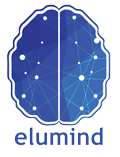In today’s fast-paced and demanding work environment, productivity, organization, and focus are crucial. For individuals with Attention Deficit Hyperactivity Disorder (ADHD), these everyday expectations can present unique challenges. However, with proper understanding, support, and practical tools, employees with ADHD can not only thrive but often excel in the workplace. This article explores ADHD and its impact on work performance, addressing both employee experiences and employer responsibilities, and offers strategies to create a more inclusive, productive environment.
What is ADHD?
ADHD is a neurodevelopmental condition characterized by symptoms of inattention, hyperactivity, and impulsivity. Although often associated with childhood, it persists into adulthood in approximately 60% of cases. In adults, ADHD may not present as overt hyperactivity but rather as restlessness, difficulty concentrating, forgetfulness, poor time management, and problems with organization.
ADHD is not a sign of laziness or lack of intelligence. In fact, many individuals with ADHD possess high levels of creativity, energy, and out-of-the-box thinking—traits that can become workplace assets when harnessed correctly.

ADHD at Work: Common Challenges for Employees
While everyone occasionally experiences distractions or forgetfulness, for individuals with ADHD, these symptoms are chronic and can interfere with daily job functions. Some common challenges include:
1. Time Management and Deadlines – People with ADHD often struggle with estimating how long tasks will take, leading to procrastination or last-minute rushes. They may hyperfocus on less important tasks while neglecting urgent priorities.
2. Organization and Task Completion – Disorganization is a hallmark of adult ADHD. Cluttered workspaces, lost files, or forgotten appointments can create problems with colleagues or managers. Following through on complex, multi-step tasks may be particularly difficult.
3. Focus and Attention – ADHD can cause frequent mind-wandering and distractibility, especially in open office settings. Employees may miss important details in meetings or emails.
4. Impulsivity and Emotional Regulation – Some may speak out of turn in meetings, interrupt others, or make hasty decisions without considering consequences. Others might struggle with managing frustration, especially under stress.
5. Workplace Relationships – Difficulty reading social cues, missing meetings, or delivering late work can strain relationships with supervisors and coworkers, even when intentions are good.

Myths and Facts About ADHD in the Workplace
❌ Myth #1 – People with ADHD are lazy or unmotivated
✅ Fact – ADHD affects executive function, not desire to succeed. Many work harder to compensate.
❌ Myth #2 – ADHD only affects children.
✅ Fact – Over 4% of adults globally live with ADHD, many undiagnosed.
❌ Myth #3 – Medication is the only treatment.
✅ Fact – While helpful for some, effective treatment includes behavioural strategies, coaching, and brain-based therapies.
❌ Myth #4 – People with ADHD can’t handle high-pressure jobs.
✅ Fact – Many excel in dynamic, creative, or fast-paced roles when supported.
Supporting Employees with ADHD: What Employers Can Do
Creating an inclusive and supportive work environment not only helps individuals with ADHD, but also benefits the entire organization through improved morale, reduced turnover, and increased productivity.
1. Reasonable Accommodations – Under laws such as the Canadian Human Rights Act and the Americans with Disabilities Act (ADA), employers are required to provide reasonable accommodations. These may include:
- Flexible work hours or remote work options
- Noise-canceling headphones or private office space
- Written instructions instead of verbal ones
- Extra time for complex tasks
- Use of organizational tools or software (e.g., task management apps)
2. Open Communication and Understanding – Managers should foster open conversations about support needs. Providing psychological safety allows employees to disclose challenges and ask for help without fear of stigma.
3. Performance-Based Evaluations – Focus on results rather than how the work is completed. Some ADHD individuals may work irregular hours or need more breaks but still meet expectations.
4. Training for HR and Managers – Educating leaders about neurodiversity helps reduce bias and misunderstanding. ADHD is not a character flaw—it’s a difference in brain wiring that needs different support systems.

Empowering Employees with ADHD: Practical Strategies
If you have ADHD, you are not alone—and there are effective ways to manage your symptoms and boost performance:
1. Use Visual Tools – Task boards, color-coded calendars, sticky notes, and reminders can help maintain focus and track deadlines.
2. Break Work into Chunks – Divide tasks into smaller, manageable parts. Reward yourself after completing each stage.
3. Time-Blocking – Set aside specific blocks of time for different types of tasks, including breaks.
4. Mindfulness and Movement – Frequent short walks or mindfulness exercises can help regulate focus and reduce stress.
5. Brain-Based Interventions – Mental health clinics like Elumind Centres for Brain Excellence offer therapies that address ADHD symptoms at the root cause level:
- QEEG Brain Map – Provides a scientific, visual representation of brainwave activity to identify patterns associated with ADHD and guide individualized treatment plans.
- Neurofeedback – Trains the brain to regulate its own activity, enhancing attention and emotional control over time.
- Biofeedback – Helps individuals become aware of and regulate physiological responses such as heart rate and breathing—reducing anxiety and impulsivity.
- Photobiomodulation (PBM) – Uses light therapy to stimulate brain function and improve mood and cognition.
Success Stories: ADHD as a Strength
Many high-performing professionals and entrepreneurs have ADHD, including Richard Branson, Simone Biles, and Will.i.am. With the right tools, ADHD can become a source of resilience, creativity, and leadership.
Companies that support neurodivergent individuals often report greater innovation and engagement. Embracing ADHD as a strength rather than a limitation is not just ethical—it’s smart business.
Final Thoughts: A Call for Awareness and Action
ADHD in the workplace is not a niche issue—it’s a widespread challenge that, when addressed properly, can unleash untapped potential. Whether you’re an employee seeking support or an employer aiming to create a more inclusive environment, understanding is the first step.
By investing in brain-based approaches, mental wellness tools, and neurodiverse-friendly practices, we can transform the workplace into a space where everyone—regardless of how their brain is wired—can succeed.
If you or someone you know is struggling with ADHD at work, contact Elumind to learn more about customized solutions that go beyond symptom management and help build long-term mental clarity, focus, and productivity.








